An interview with shoemaker Patrick Frei
0October 2, 2018 by Ville Raivio
VR: Your age and occupation?
Products from Pukimo Raivio
Ralph Lauren, Black Label suit, size 52EU
PF: I am 36 years old and I am a shoe- and bootmaker. I make lasts, uppers, bottoms and trees.
VR: Your educational background?
PF: I graduated from high school and did a traditional apprenticeship with a master shoemaker before continuing elsewhere.
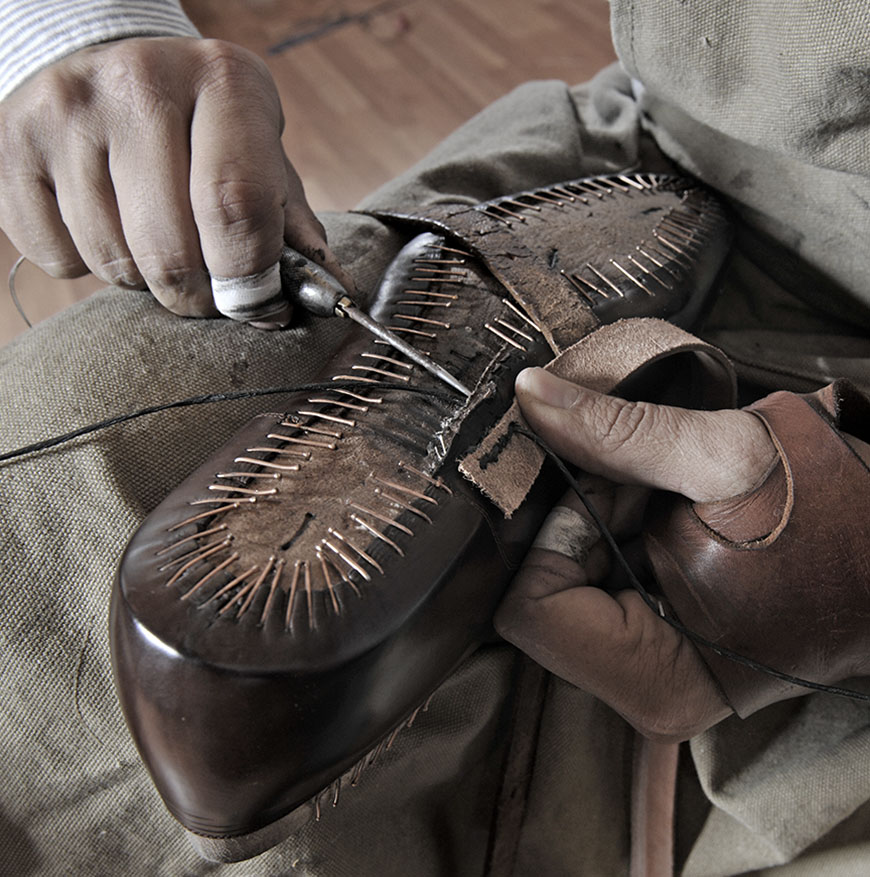
VR: Are you married and do you have any children (and what do they make of your enthusiasm for shoes)?
PF: I have two daughters (five and seven years old), who regularly visit me in the workshop. They like exotic leathers and the elder one works occasionally with wood on the last bench. My wife is used to my shoe obsession and likes what I do. If I need a second opinion on anything related to shoes I ask and trust her. Most of the time.
VR: How did your parents and siblings react when you decided to become a shoemaker?
PF: My mother always supported me and thought it was a good choice. My father had more doubts and wanted me to study. Today he is very proud of what I do. Without my wife and her trust in me and how I work I don’t think I would have got this far…
VR: What other hobbies or passions do you have besides footwear?
PF: I am really passionate about antique pocket watches. For me, many of the high-end watches made between 1750 and 1920 are pieces of art. Entirely made by hand. Perfection, from both a technical and an aesthetic viewpoint. I see parallels to shoemaking in watchmaking. Both crafts peaked around 1900 – at that time many craftsmen were very proud and managed to work at an extremely high level.
I also restore old Italian lever espresso machines and practice coffee-making daily.
I also enjoy juggling, hiking, beatboxing, cycling, campfires with friends, and malt.
VR: How did you first become interested in shoes, and when did you start to focus on artisanal shoemaking?
PF: After school and civilian service I spent 18 months traveling through South America. I used to juggle a lot and do street performances around then and was really into classic suitcases. I met an old man in Cochabamba, Bolivia, who made traditional suitcases and trunks. I stayed with him for several weeks and learned how to make them. That was my first experience of leather-working and I wanted to learn more about it and get more deeply involved in it. Back in Germany I wanted to buy leather for a hatbox from a shoemaker. It was the first time I wondered how shoes were made. I had a friend who was already learning how to make shoes and he showed me a bit of his work and gave me the Laszlo Vass book. I immediately knew that I wanted to learn this gentle craft and was lucky enough to find a master, Feri Braun, who took me on as his apprentice in 2005.
After two and a half years I finished my education and started working on my own. Being young and self-confident, I thought that I already knew a lot. One day I visited my shoemaker friend Manu Pohl in Munich, who at the time was working with the royal Bavarian shoemaker Heribert Dirrigl. The Dirrigl family had been making shoes for over 400 years. Now only Heribert Dirrigl was left, still making shoes at nearly 80. It was there that I discovered sample shoes from 1900 that blew my mind. Such perfect craftwork and so balanced. Made 100% by hand without machines or electricity. I had never seen anything like them. That was when I realized I actually knew very little, and I wanted to learn how to make real masterpieces.
I studied and experimented a lot and visited numerous shoemakers all over Europe (Scheer&Söhne, Peron&Peron, Herve Brunelle, Foster&Son, Gaziano&Girling, Florian Haderer, etc.)
VR: Why classic models and not fashion?
PF: I generally prefer classic and traditional stuff. I think many beautiful things have evolved over a long time and are just perfect how they are. That said, I am very open to experiments and developing things. We should not forget that an Oxford or Full-Brogue was not always there. Creative minds invented them.
With traditional shoemaking I can make everything myself, from the design to the finished product. I can explore the secrets of every step and find out where the perfection lies for me. In fashion I often see good ideas or designs, but if the material is poor quality or the proportions of any part are not right or if it is not made properly, it will never be a masterpiece.
VR: Where does your knowledge of the craft come from – books, in-house training, workshops or somewhere else?
PF: After completing my apprenticeship and first seeing antique sample shoes, I started collecting a great many antique shoemaking books. I studied and experimented a lot and visited numerous shoemakers all over Europe. I was received everywhere with open arms, discovered old techniques and learnt that many shoemakers had created their own distinctive ways of making shoes over the centuries. On a visit to John Lobb I had the very good fortune to be invited to stay at the shoemakers’ cellar for a few days, and finally Mr. Lobb Senior gave me a day with an experienced last maker as a gift. After my education, where I learned the basics, I never worked for other shoemakers, and I guess you could say that I am mostly self-taught.
VR: How would you describe the house style of Frei shoes?
PF: I make different styles of shoes: fine shoes, country shoes and casual shoes, for men and women. Nevertheless, I think many people see a continuous thread running through my work. I suppose I am particularly influenced by the Belle Époque of shoemaking around 1900 and add my modern interpretation of sharpness.
What defines my house style, beside the last shapes and the actual making, is the unique way of making hand-scratched toe plates, my own styles of trees and newly developed construction techniques. For example, the extremely narrow waists and the Freiburgian welt, which is a kind of half blind Norwegian welt. Special and refined details are very important for me.
With the shoe I made for the World Championships I reached a new personal level and created a new category of shoes. I now offer Divine shoes in addition to my fine shoes. Divine shoes are very special – individual projects that I make as a piece of art. These shoes require between 300 and 450 hours of work and are available as artworks for collectors and as walking art. I suppose that in future the Divine shoes will be perceived as an important part of my house style.
Pictured: unique toe plates
VR: Do you have a favourite shoe model (e.g. Monk, Derby, Oxford, Balmoral boot) and leather type?
PF: Actually, I would have to lie if I had to pick one. It is more the overall picture of a shoe that makes me fall in love with it. If the pattern for the upper perfectly fits the type of last shape and the material is perfect for that model and the thickness and width of the sole match…
It’s the same thing with types of leather. Old stock hand-grained box calf is beautiful, but I also love the veg tan Tuscan leathers and many more.
VR: There are several quality shoe companies in Germany – why should my readers visit yours?
PF: In the bespoke shoe segment, I find myself in the high-end niche.
I always try to make the perfect shoes for the unique individual. I figure out what purpose the shoes will serve, what comfort means to the wearer and his feet. I take into account how the client dresses, his physical characteristics and his whole demeanor. In the end the finished shoes truly belong to that individual and the connection is obvious. This means that the shoes can’t go out of fashion for that person, even after many years. It is beautiful to see how many customers view their shoes as true companions.
Even if a customer orders a classic style, like a Toe-Cap Oxford, it has to be designed all over again: first, because the lasts are different every time, and second, because the customer is different every time. For example, a long toe cap is more modern and extrovert and a short toe cap more elegant and feminine. These decisions have to be taken in view of the person wearing the shoes.
My customers can be experts on shoes, but they don’t have to be. I navigate them through different models, styles and shapes and leave to them how many decisions they want to make and where they trust in me and my opinion as to what would be the right choice for them.
To choose me, one has to like what I do and who I am. The client does not only get the final product, but the whole process. The final product is strongly influenced by the customer and by me and the way I make shoes. My aim is not to increase efficiency, to optimize and rationalize everything and make it more economical. My aim is to create masterpieces that leave lasting impressions. I am driven by the idea of beauty and perfection.
VR: What is your definition of a well-made shoe?
PF: On the one hand a well-made shoe must be functional, which means comfortable, durable and good for the feet and the rest of the body. On the other hand, there is the aesthetic aspect: proportions, surfaces, clarity and the overall impression. I think the combination of traditional techniques, quality materials and expert craftsmanship can create an excellently made shoe.
VR: Who or what inspires you?
I am inspired by many people and things, but I want to name two magnificent watchmakers and one shoemaker.
PF: Abraham Louis Breguet created stunning watches at the end of the 18th century. His creativity, sense for beauty and purposefulness were just incredible. Many of his inventions are still used in the 21st century and he is to this day considered one of the greatest, if not the greatest, watchmakers of all time.
Ferdinand Adolph Lange built up a small industry for fine pocket watches in Germany in the mid-19th century. The level of craftsmanship he reached was extraordinary. He established a watchmaking village, Glashütte, from nothing, where his knowledge was passed on to many young watchmakers who went on to make some of the world’s finest watches, without forgetting their sense of community. They had their own pension system and took care of the people in the village. Ultimately, the German Watchmaking School was established in Glashütte. Watchmakers were trained at the highest level and produced real masterpieces.
Pietro Yantorny made some of the finest (ladies’) shoes in the world at the beginning of the 20th century. He was born to Indian immigrants in the south of Italy and raised in poverty. At twelve years of age he started to work as a shoemaker and made his way, without being able to read or write, via Nice and London to Paris. He worked mainly as an employed last and tree maker. In 1904 he opened his first store in Paris and won a Gold medal at the Expo in Rome. This marked the beginning of the manufacture of one of the most refined and beautiful shoes and trees I have ever seen.
Pictured: the gold medal exhibition-grade pair
VR: Finally, you recently won the Gold medal at the World Championships in Shoemaking in London, hosted by Shoegazing. What goals did you set yourself when making the winning shoe?
PF: Actually, when I first heard of the competition I decided not to take part, because I had so much work on and little time. In the end I simply didn’t manage to not sign up. It was such a big attraction for me to make my personal masterpiece. I have always loved the antique competition shoes in the cabinets of the royal shoemakers. These shoes are more objects of art than functional shoes. The shapes are exaggerated and the work is extremely refined and beautiful. That is what I wanted to achieve – the quality of the Belle Époque of shoemaking around 1900 with the careful addition of a modern take on design and some technical details I had developed myself.
It was a beautiful experience to make the shoe and then to meet many of the shoemakers and aficionados in London, and then of course be honored for my work.
With Daniel Wegan from Gaziano&Girling, the silver medallist
Category Cordwainers, Interviews | Tags:

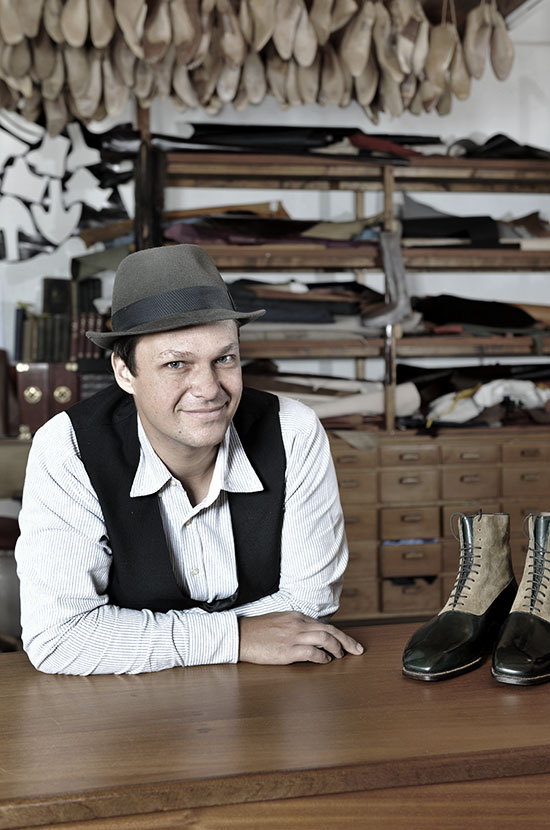
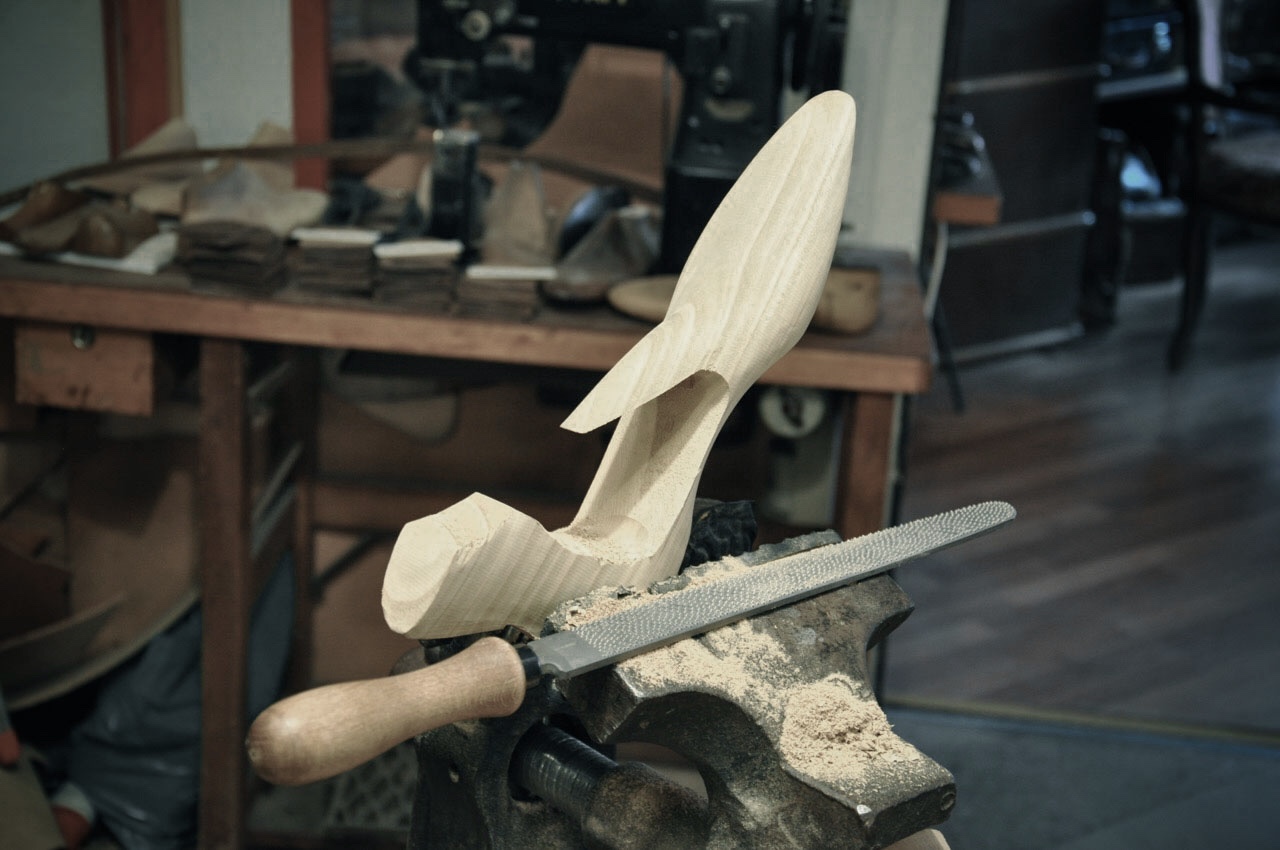
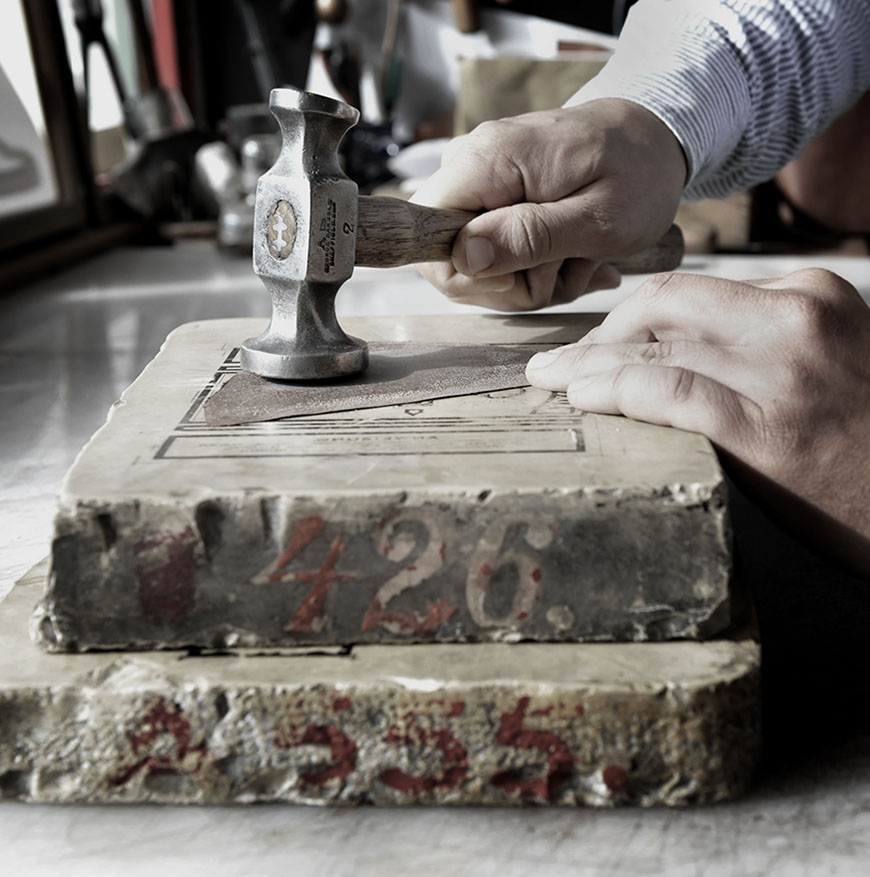
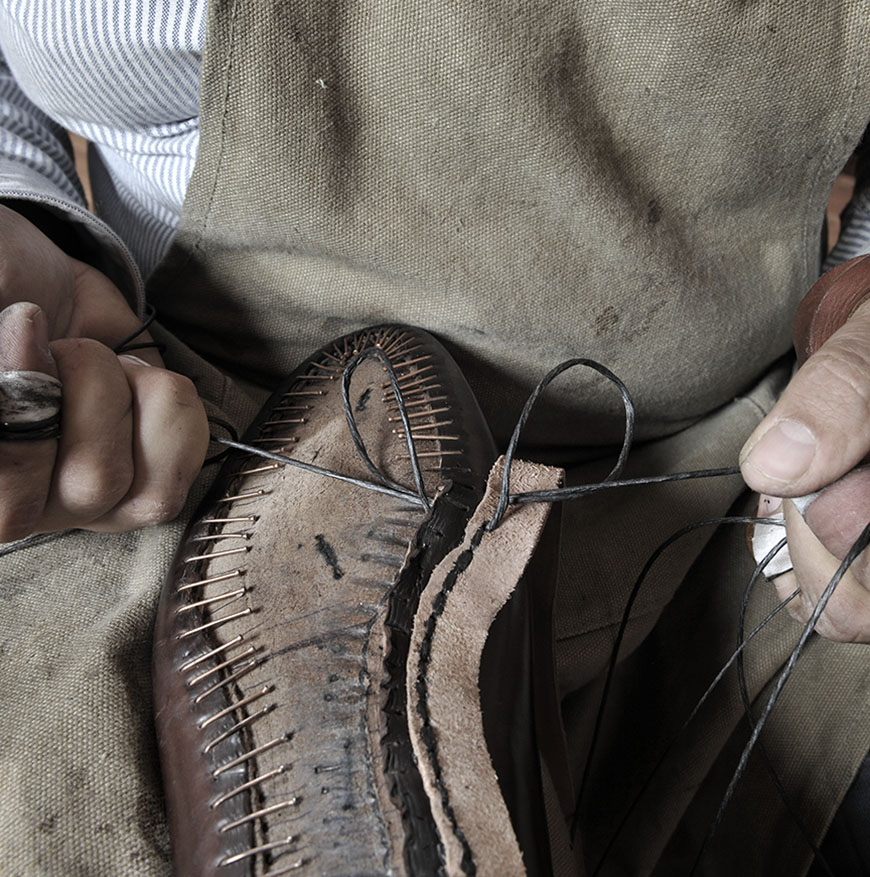
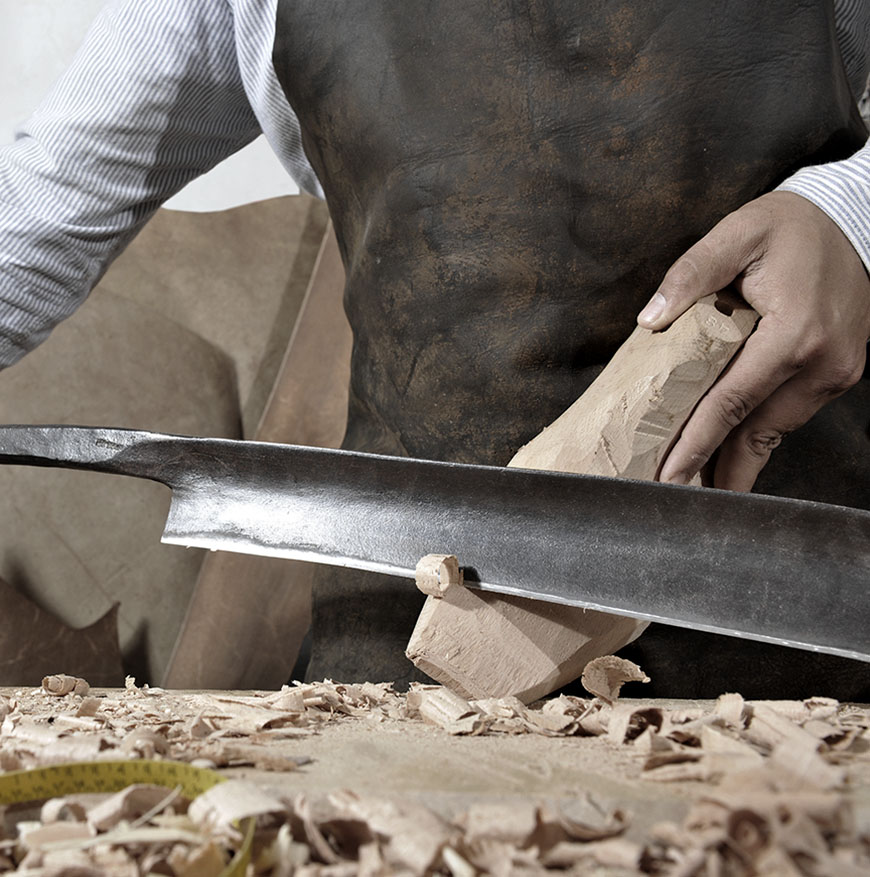

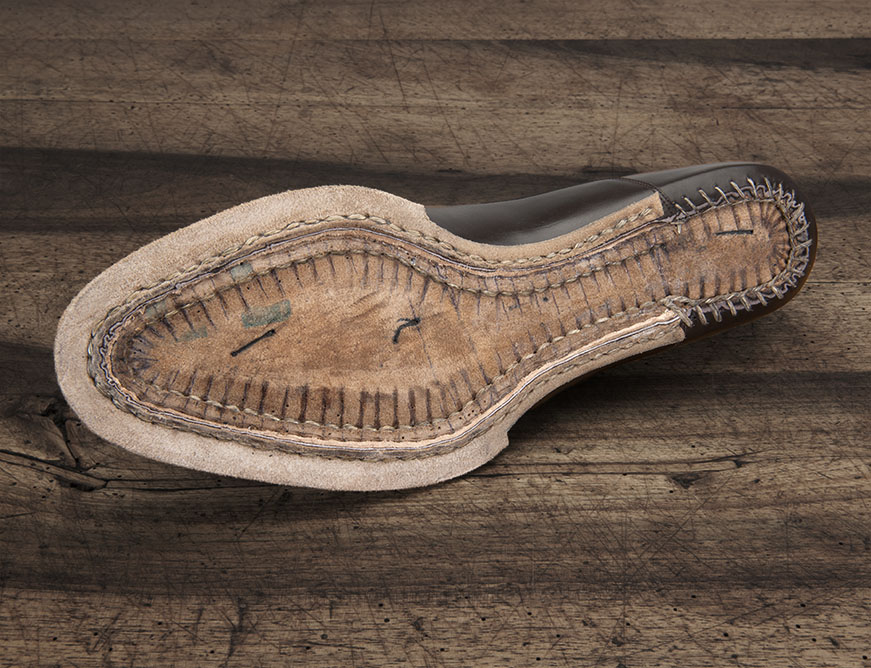
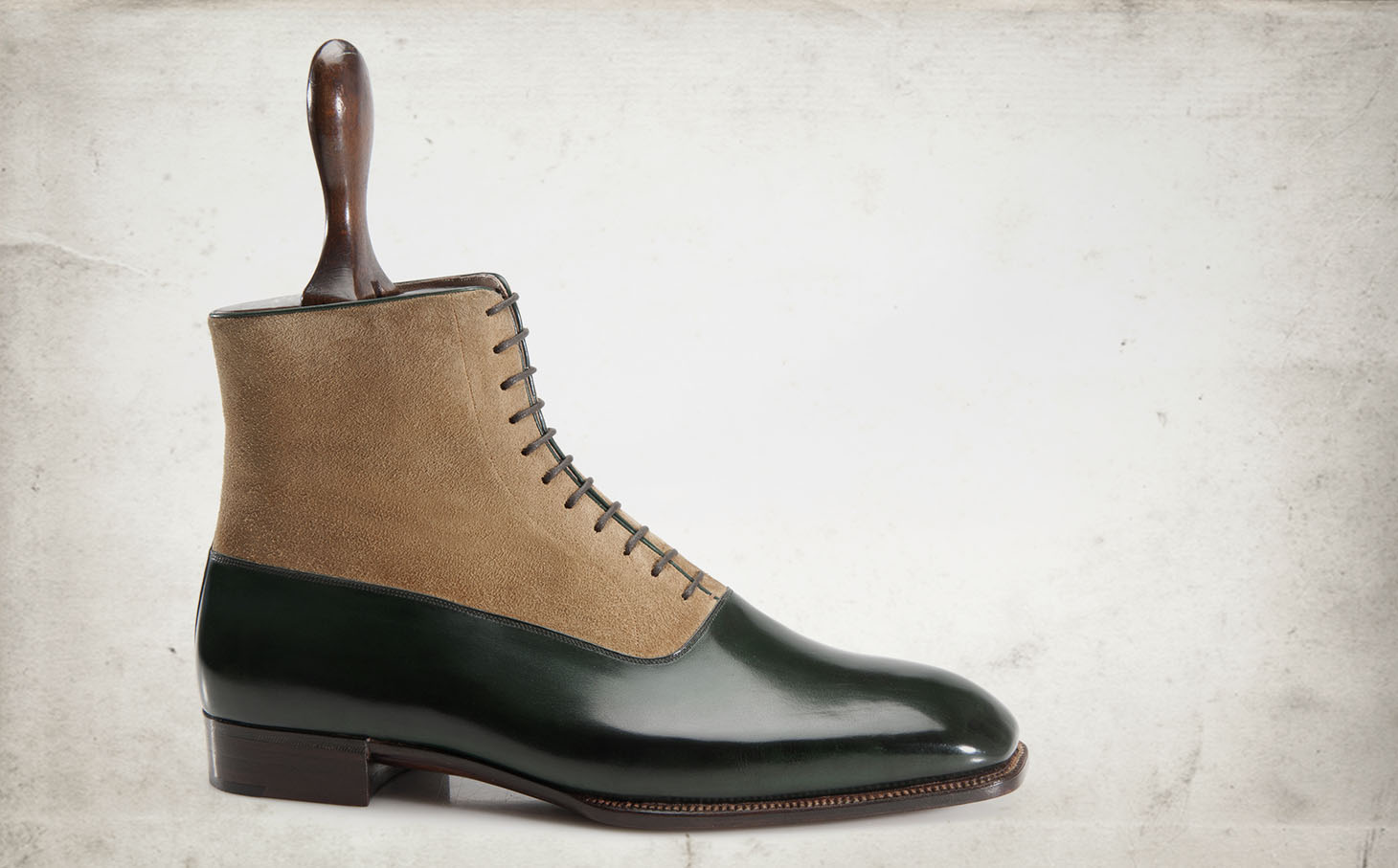
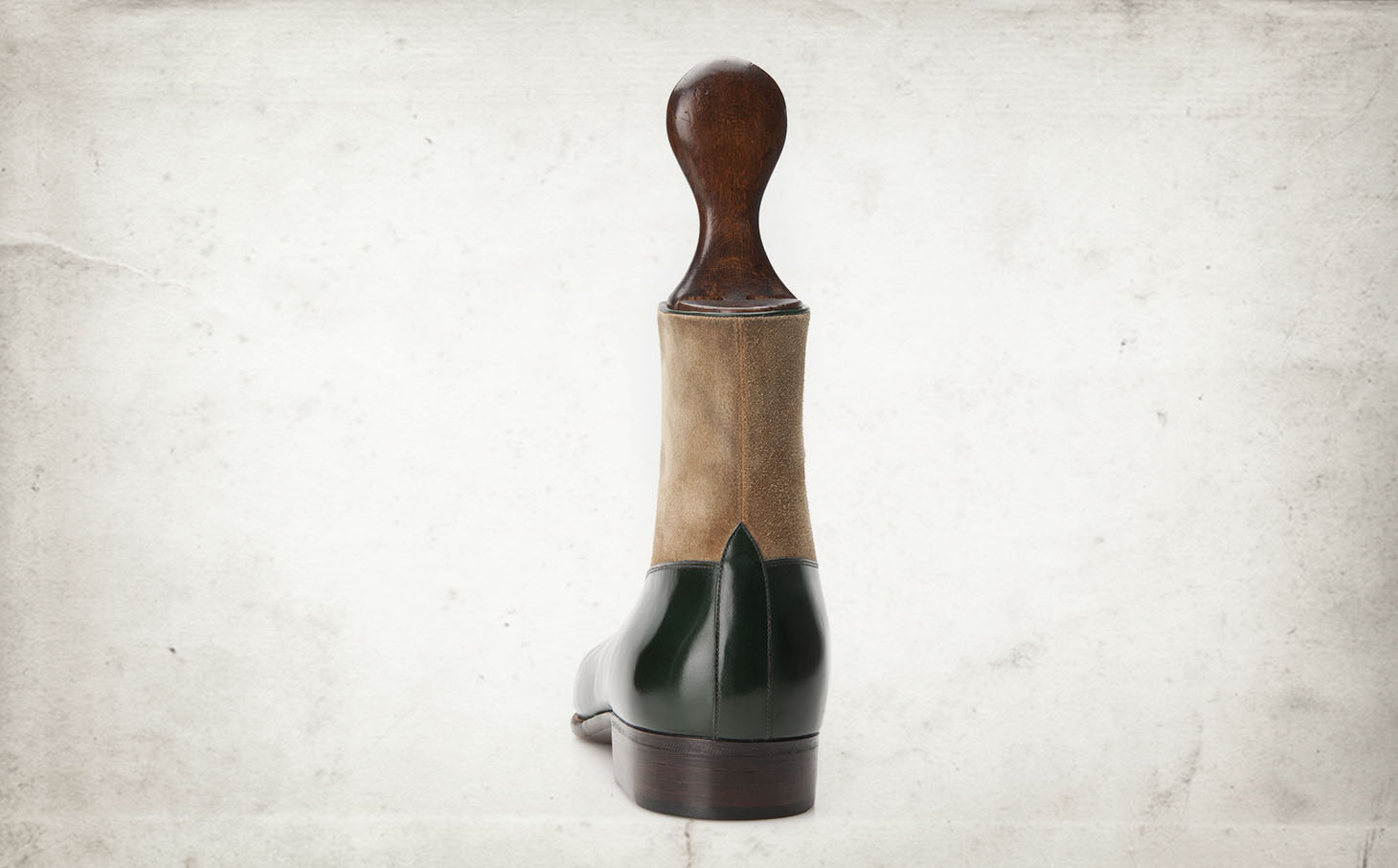
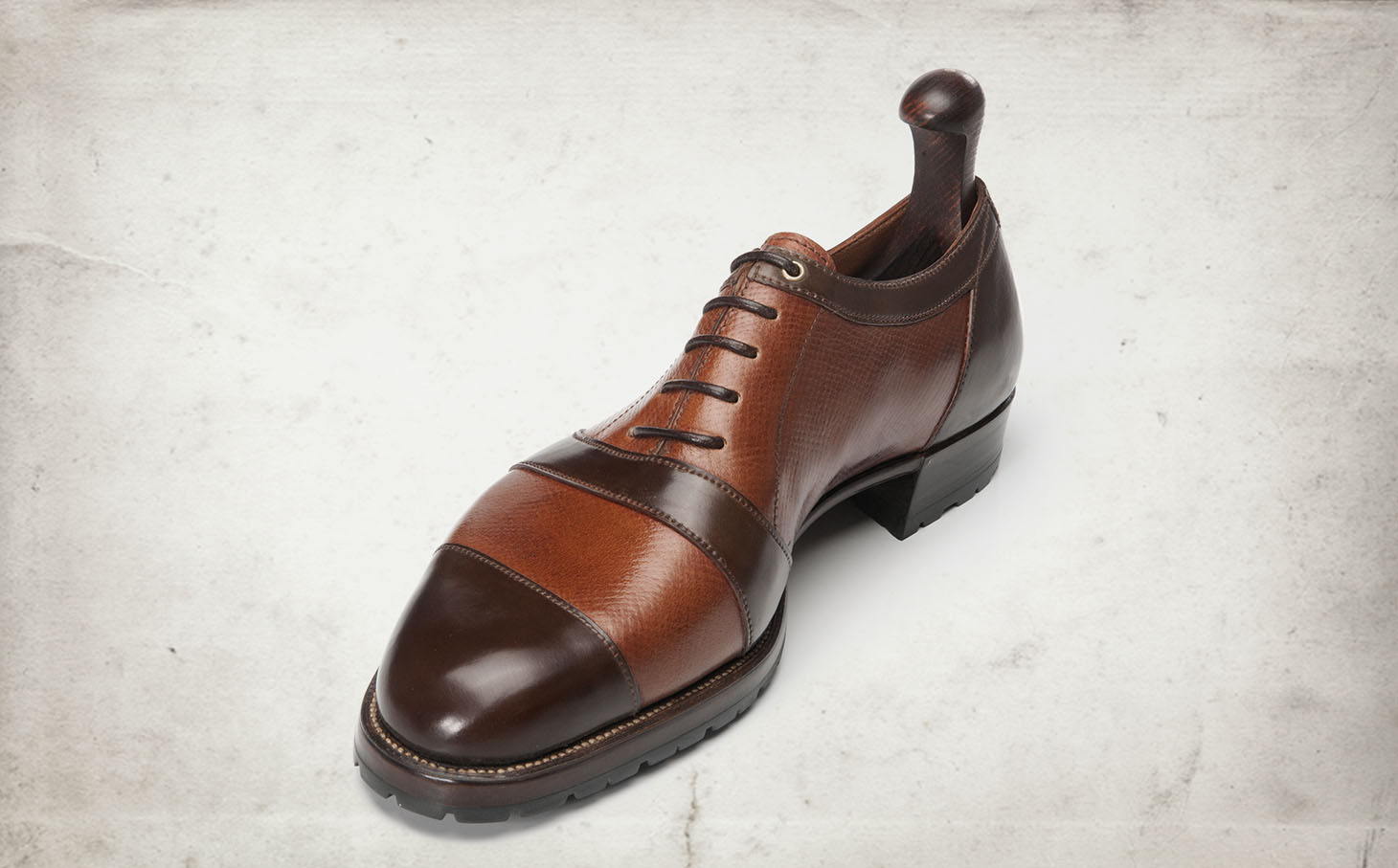
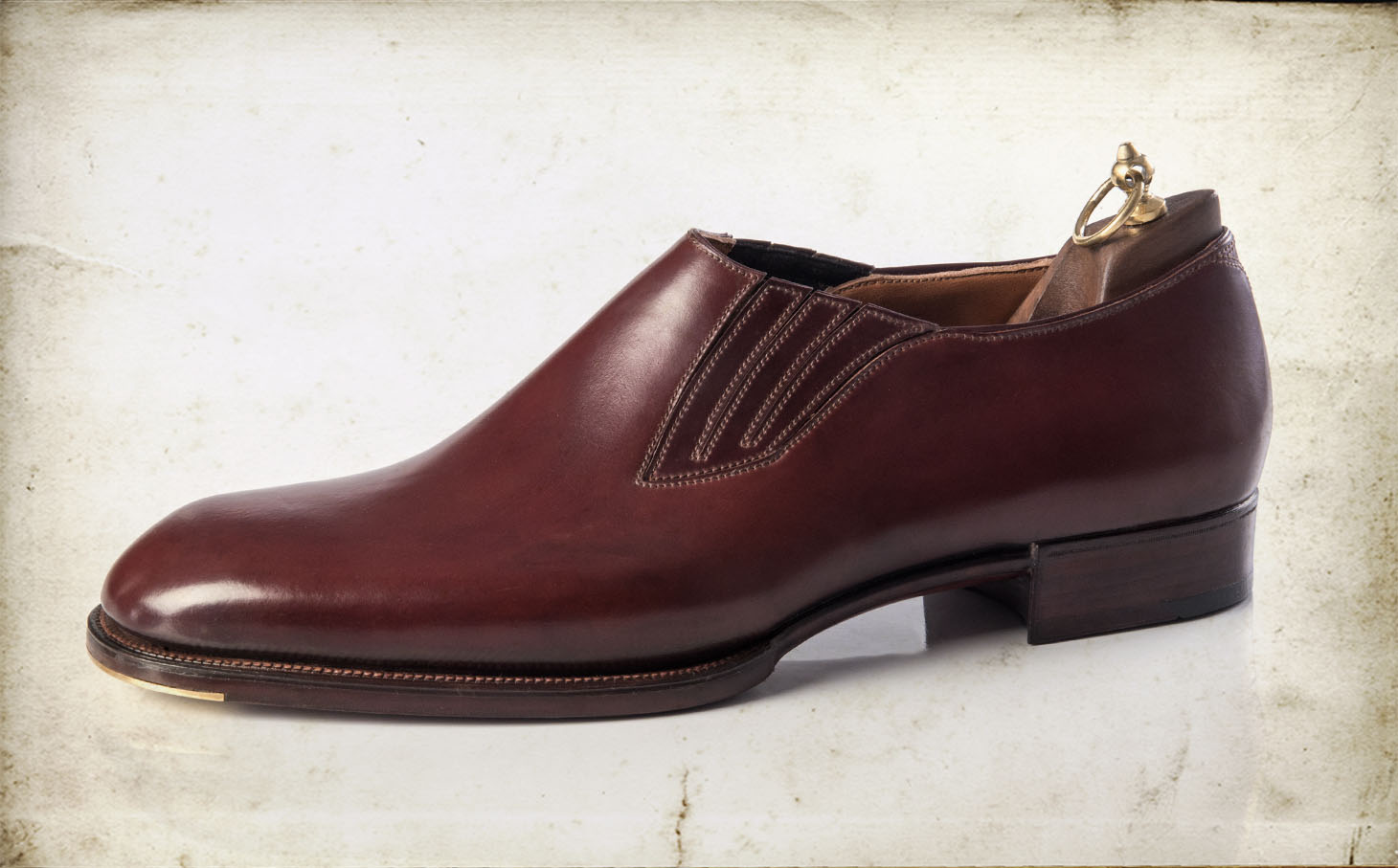
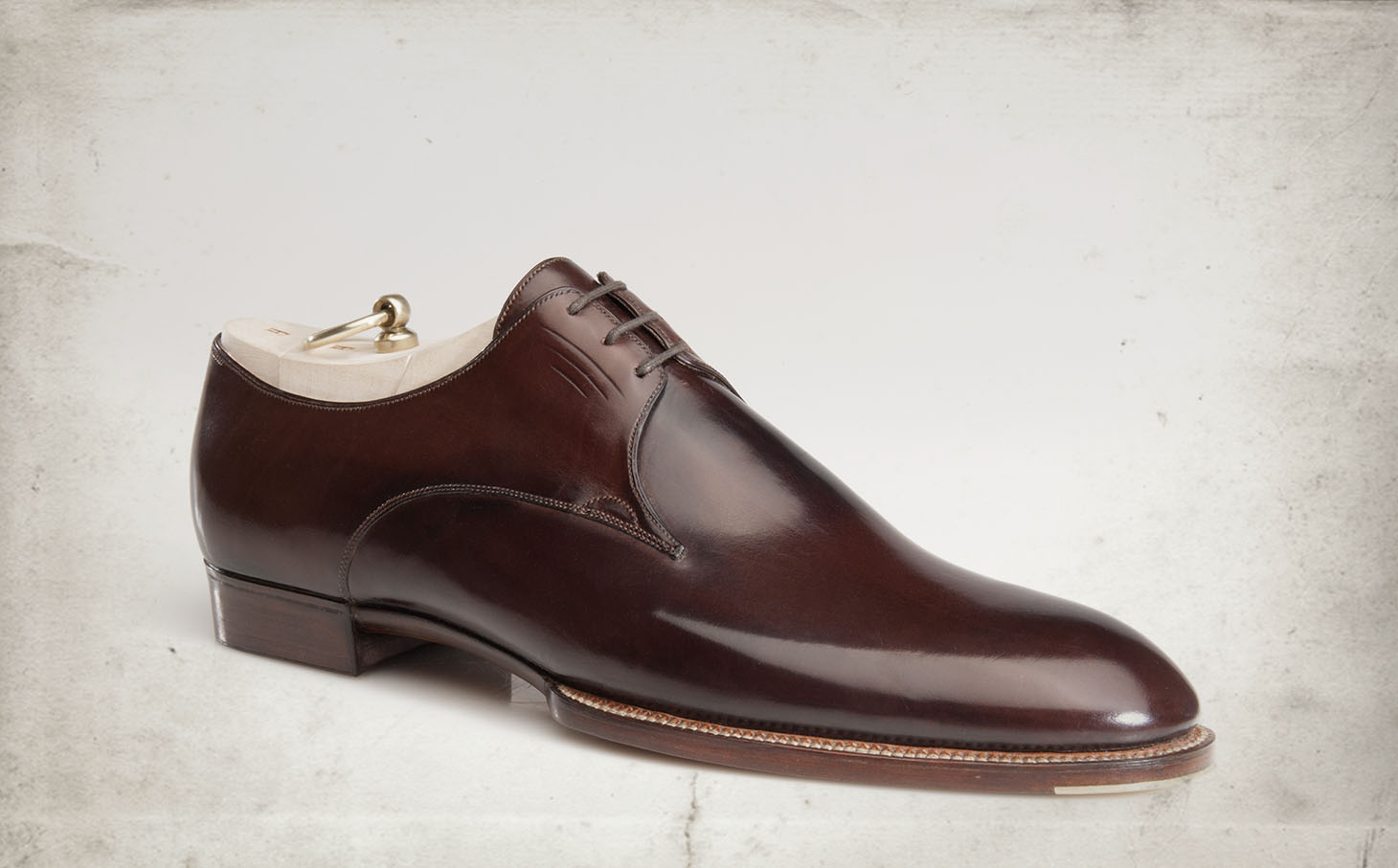
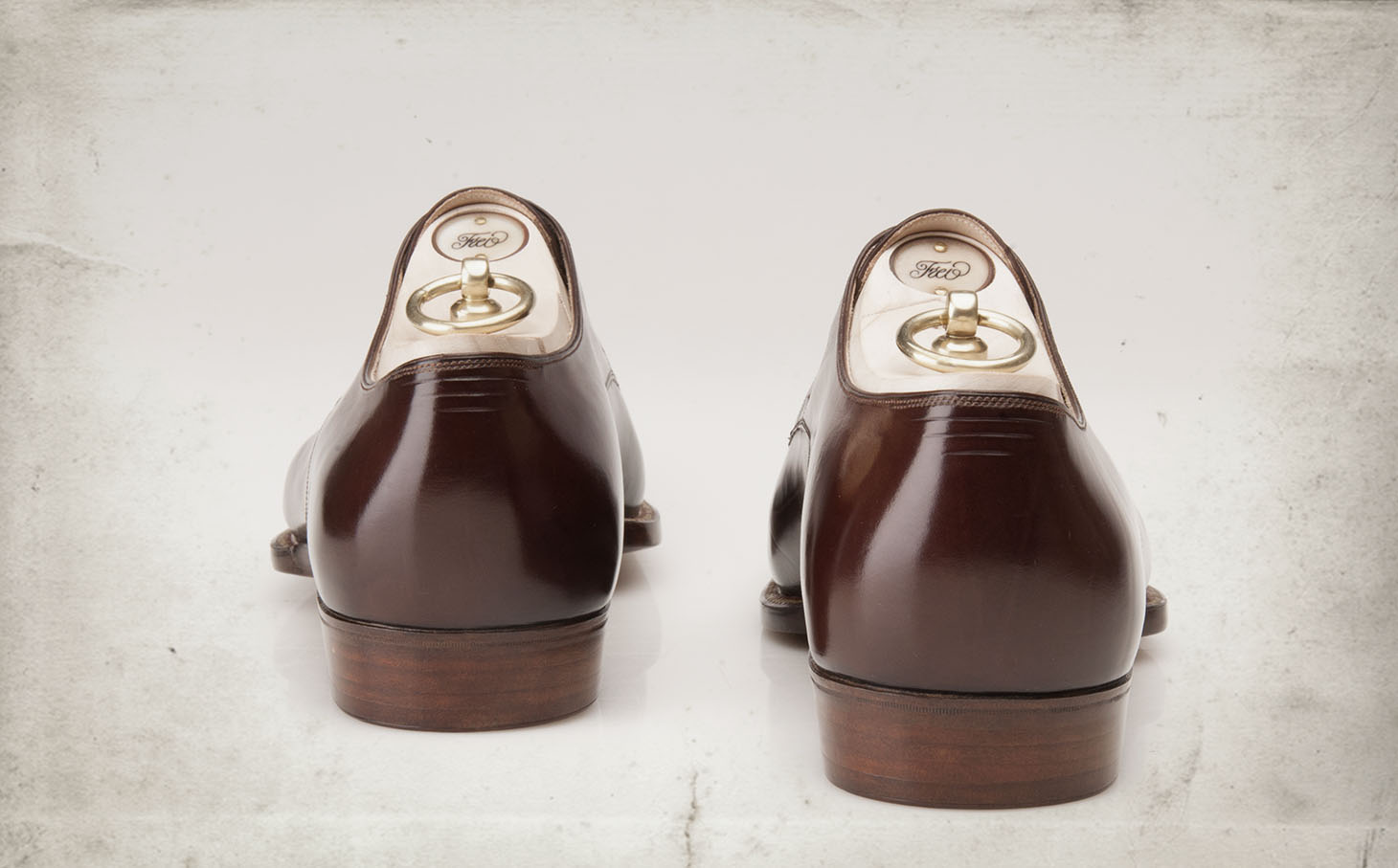
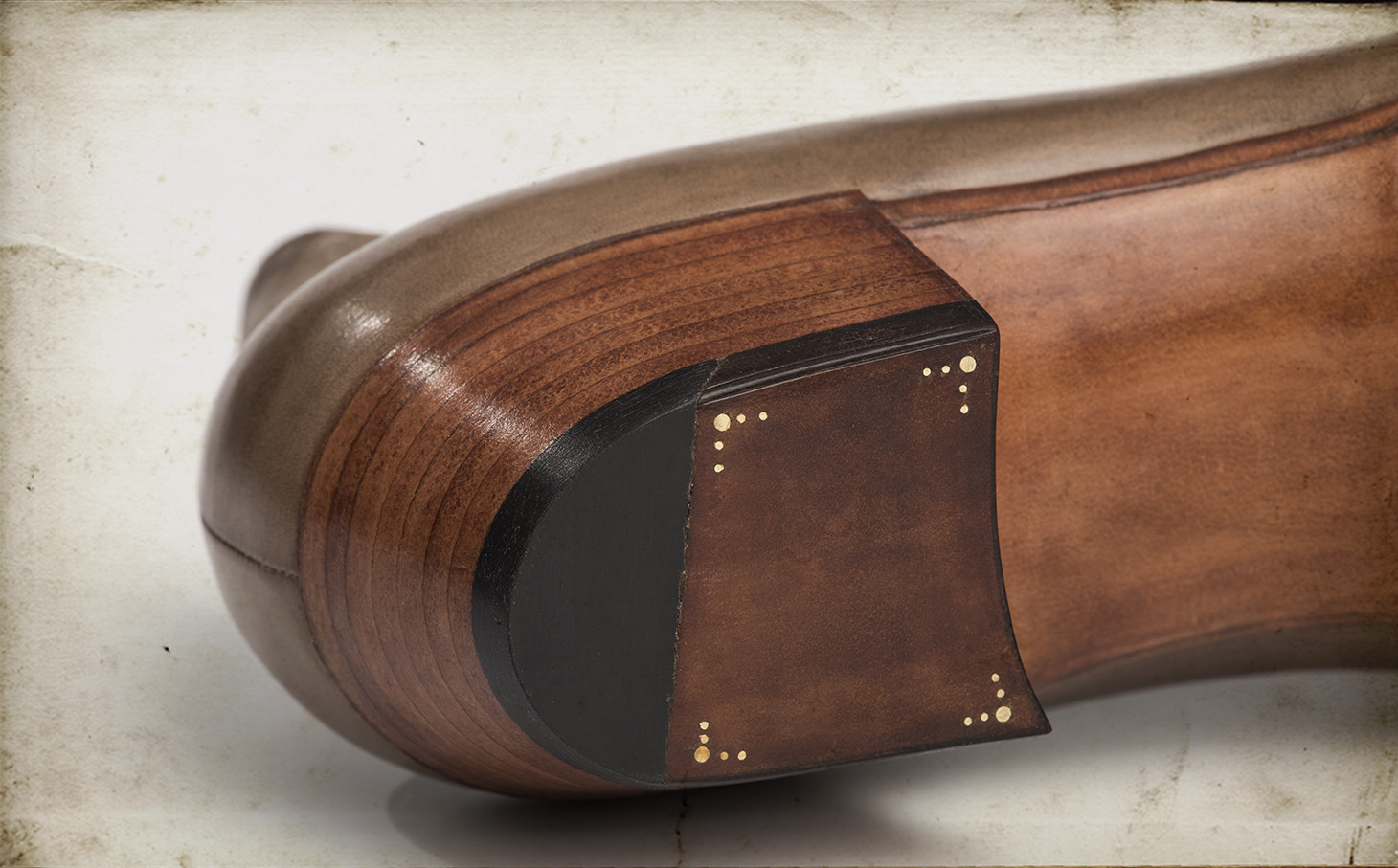
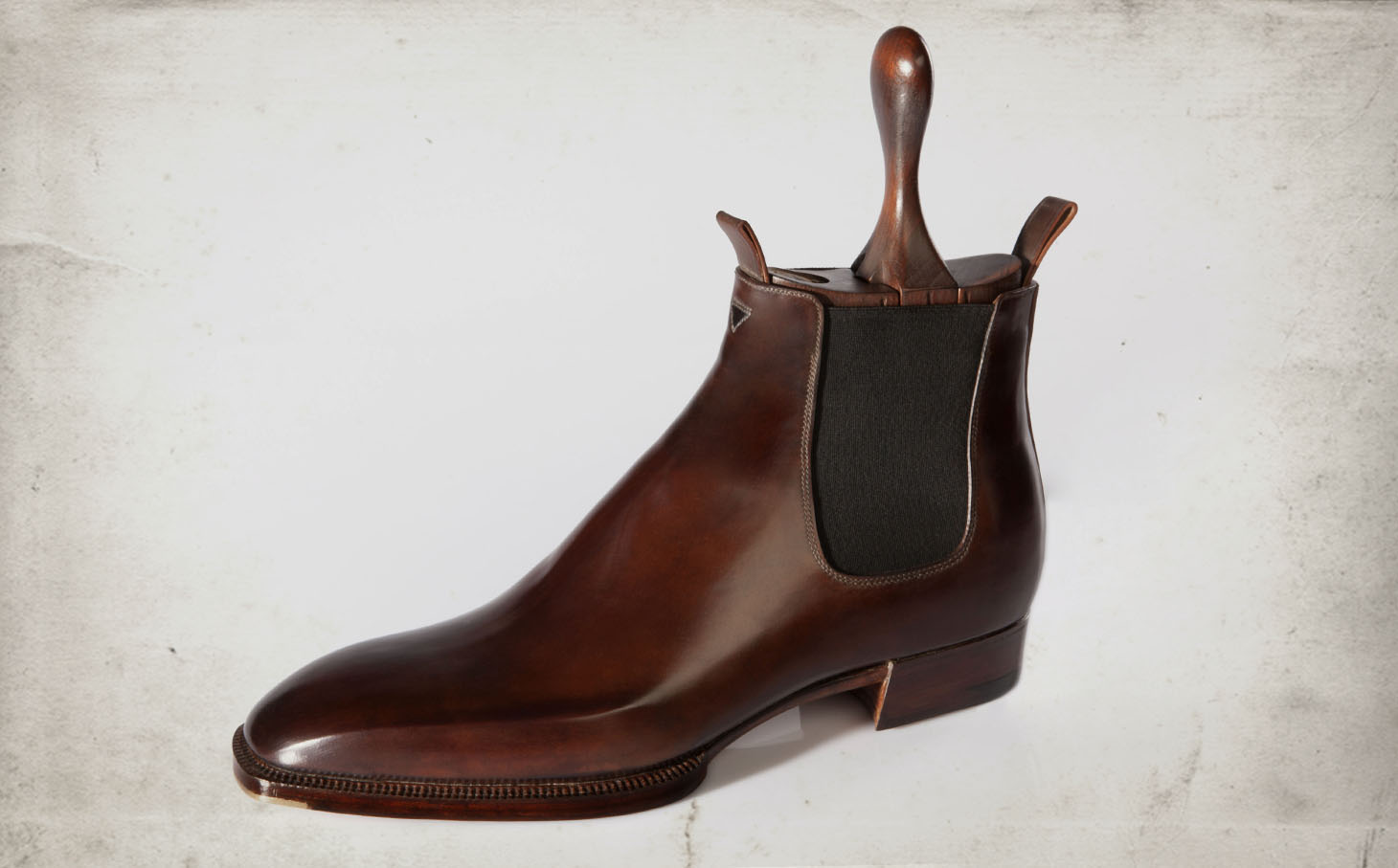
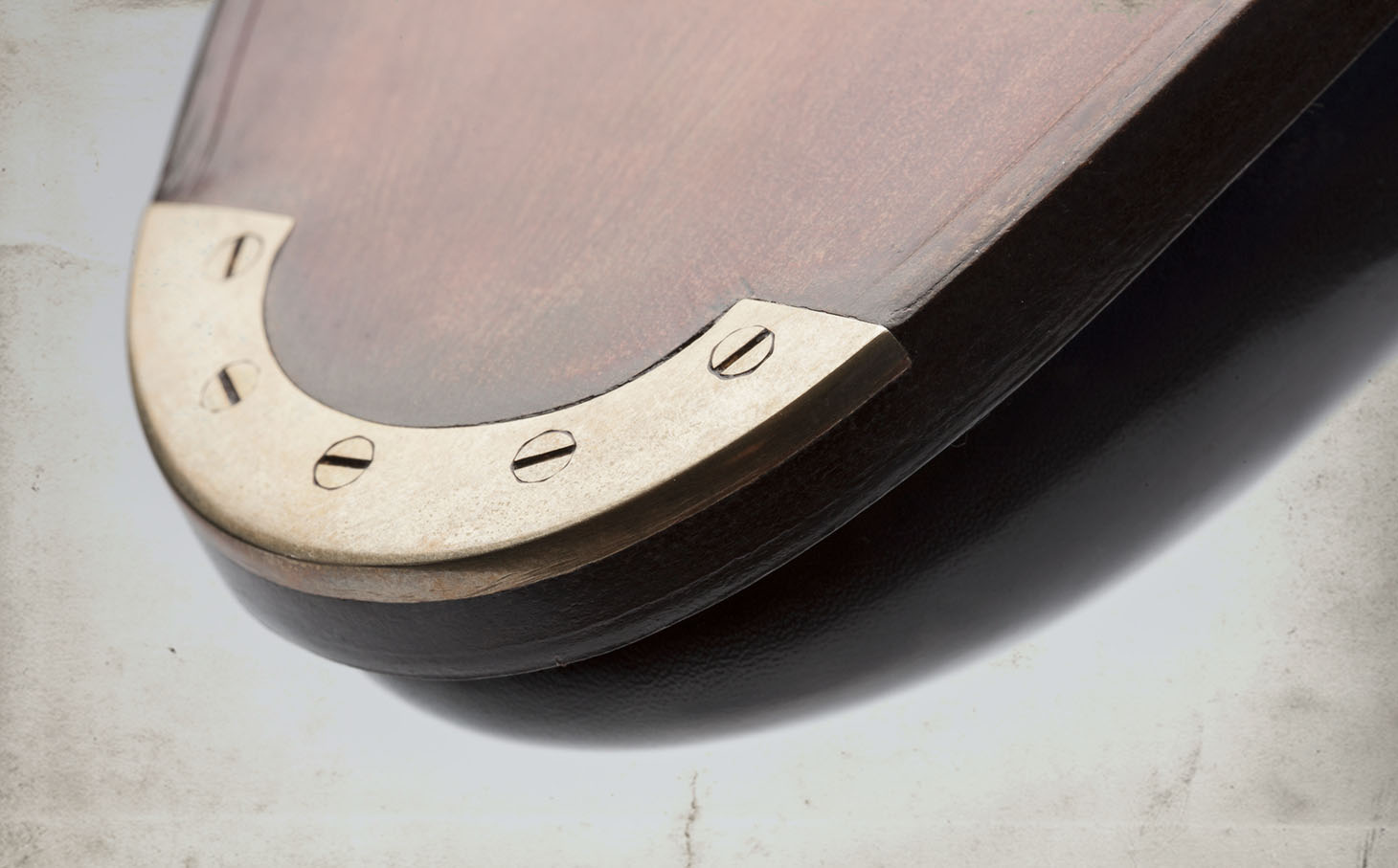
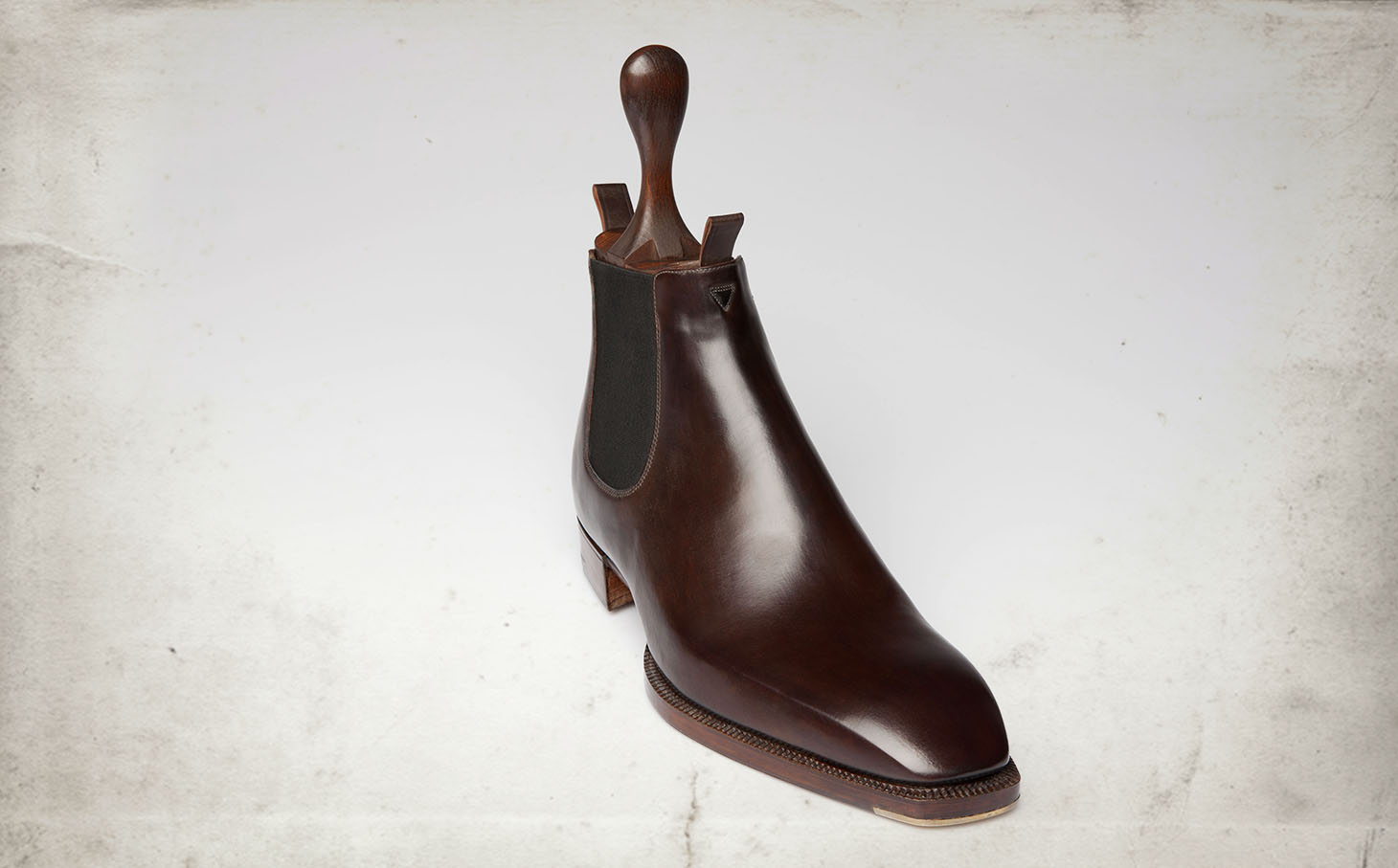
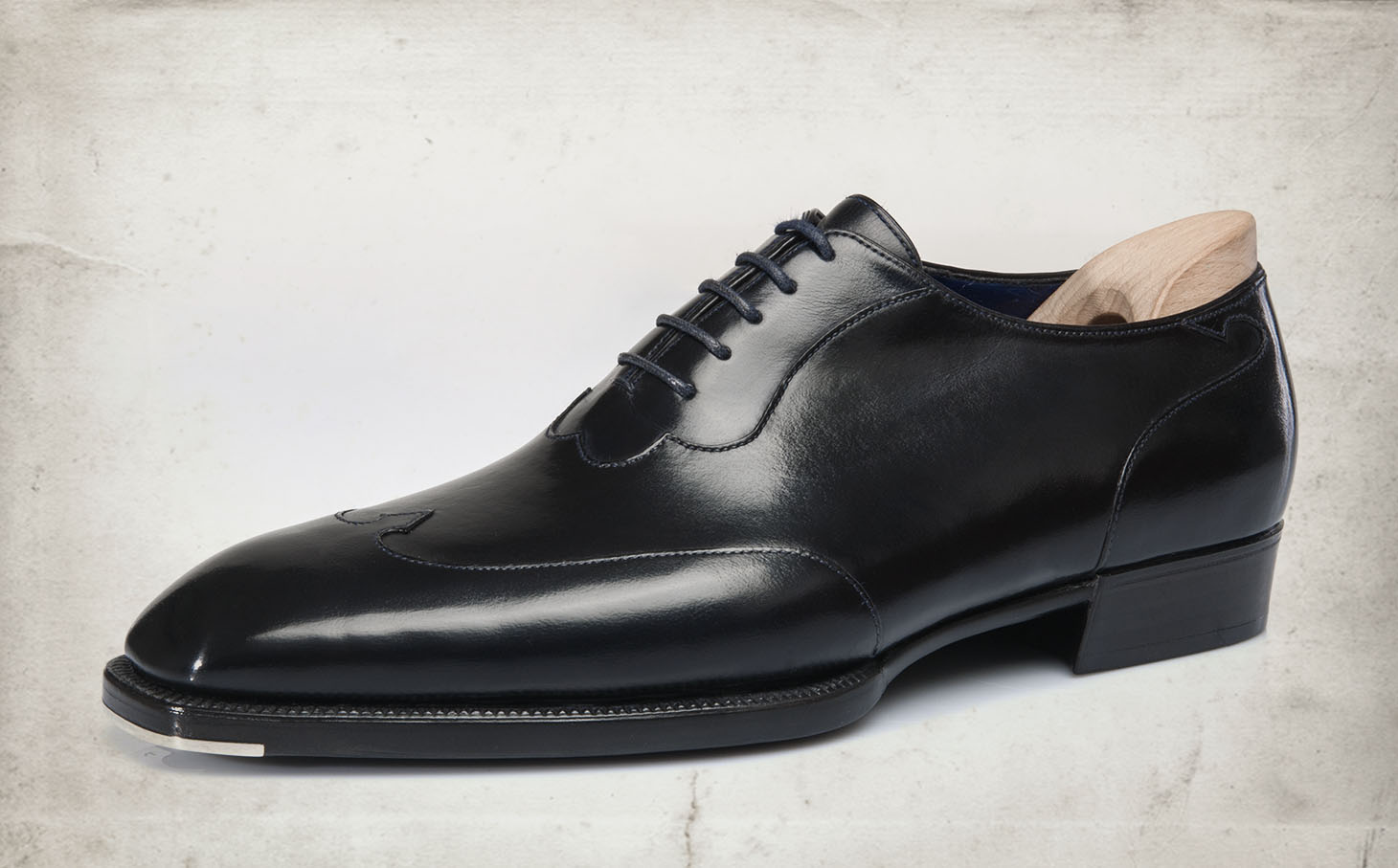
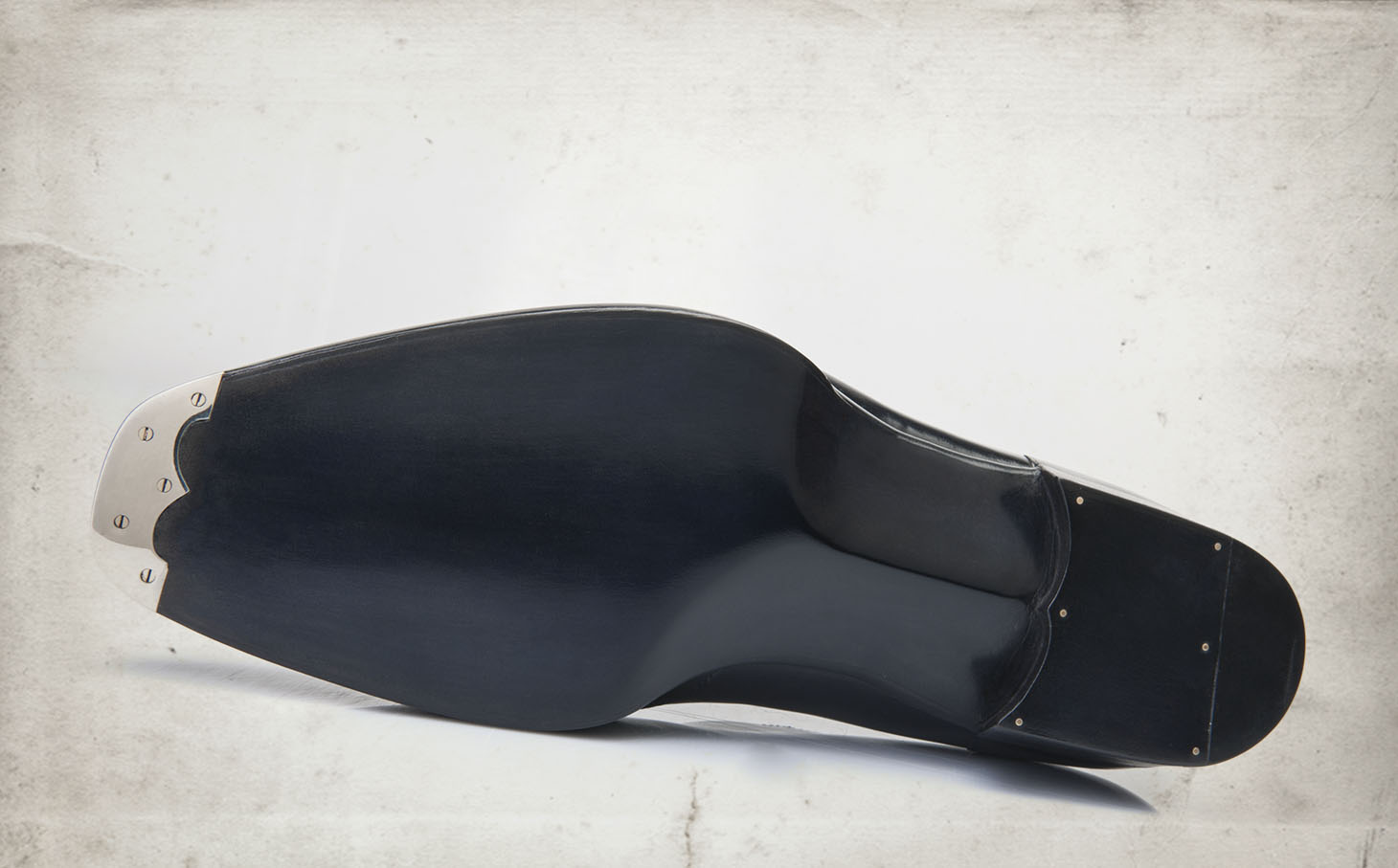
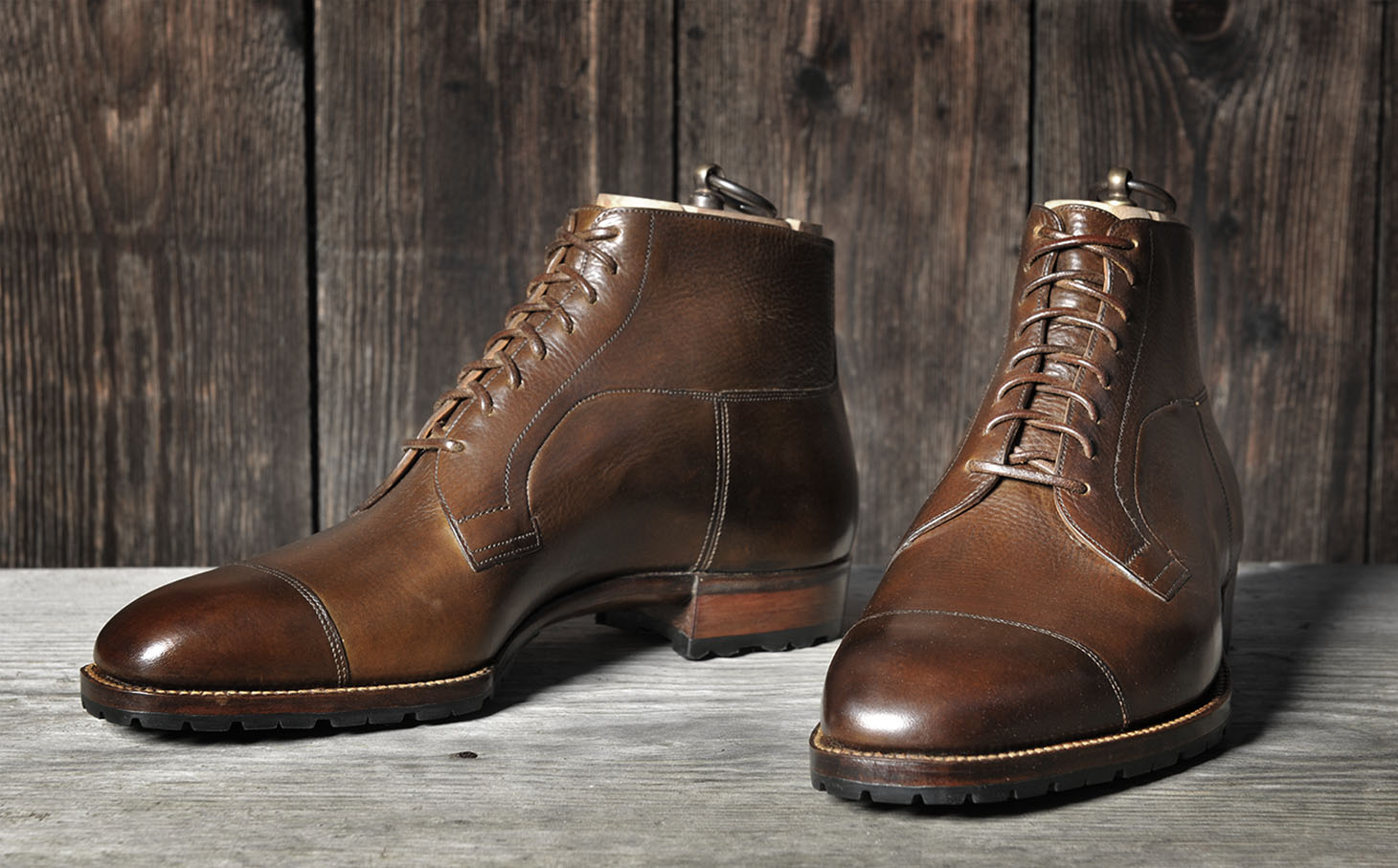
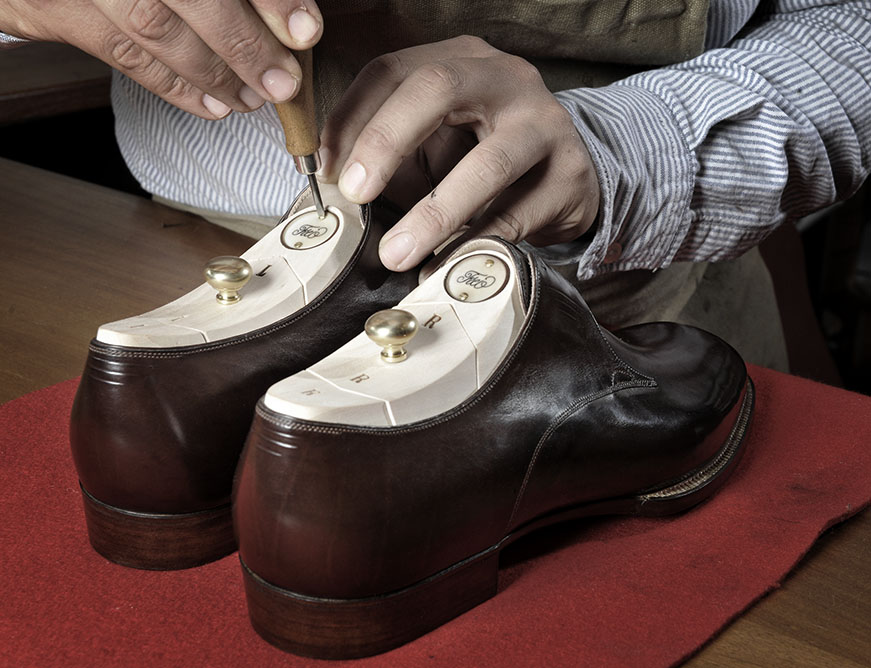
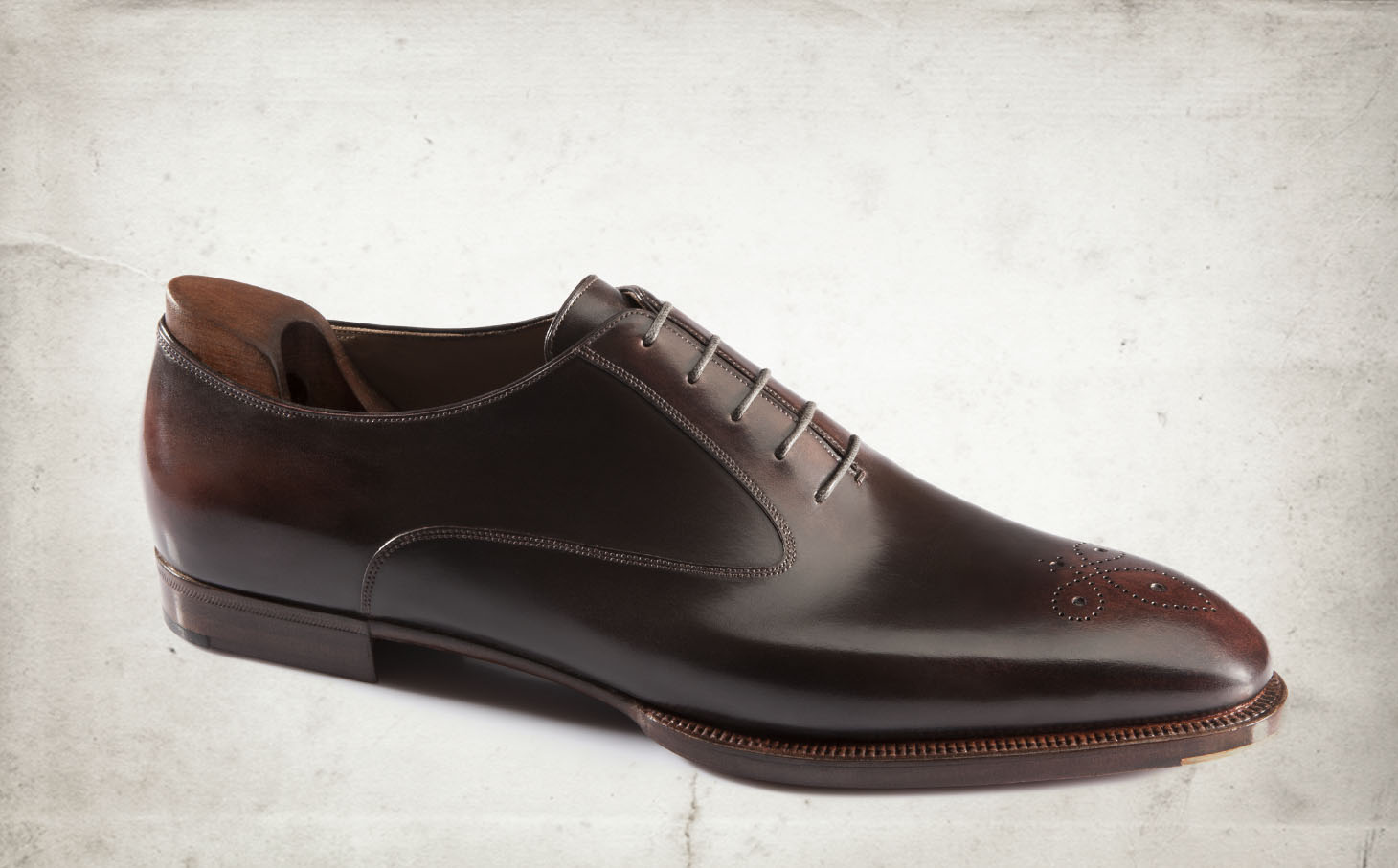
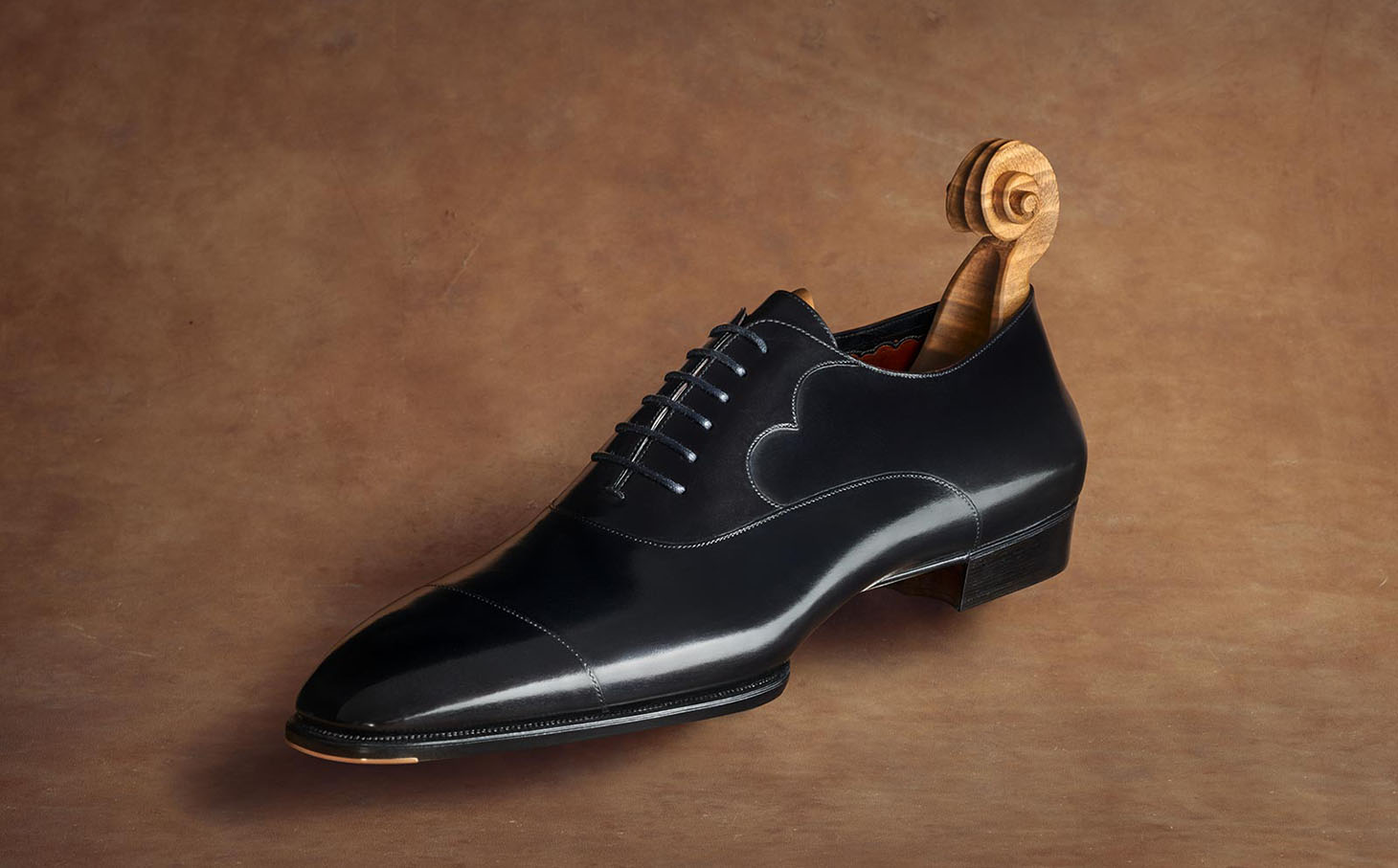
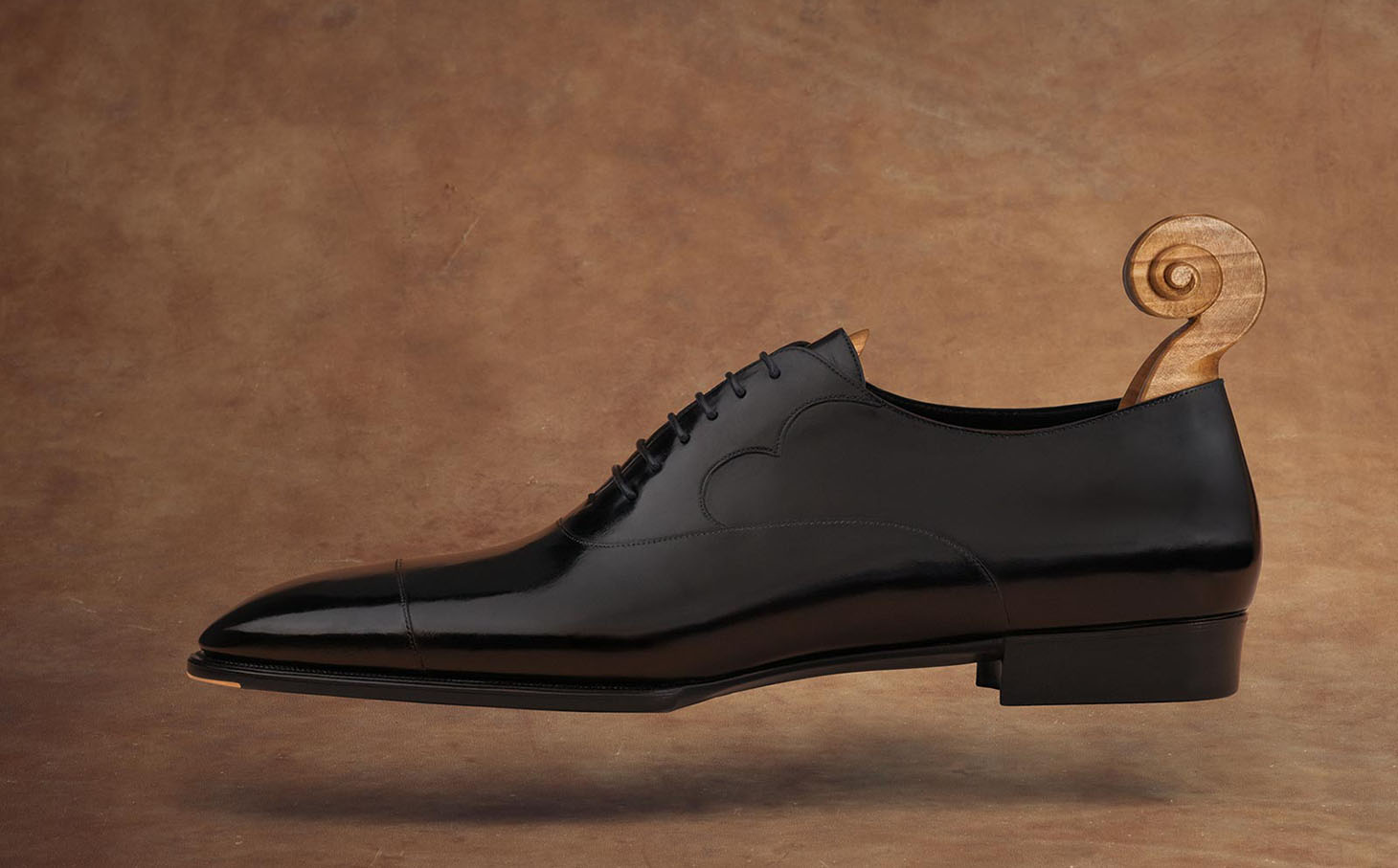
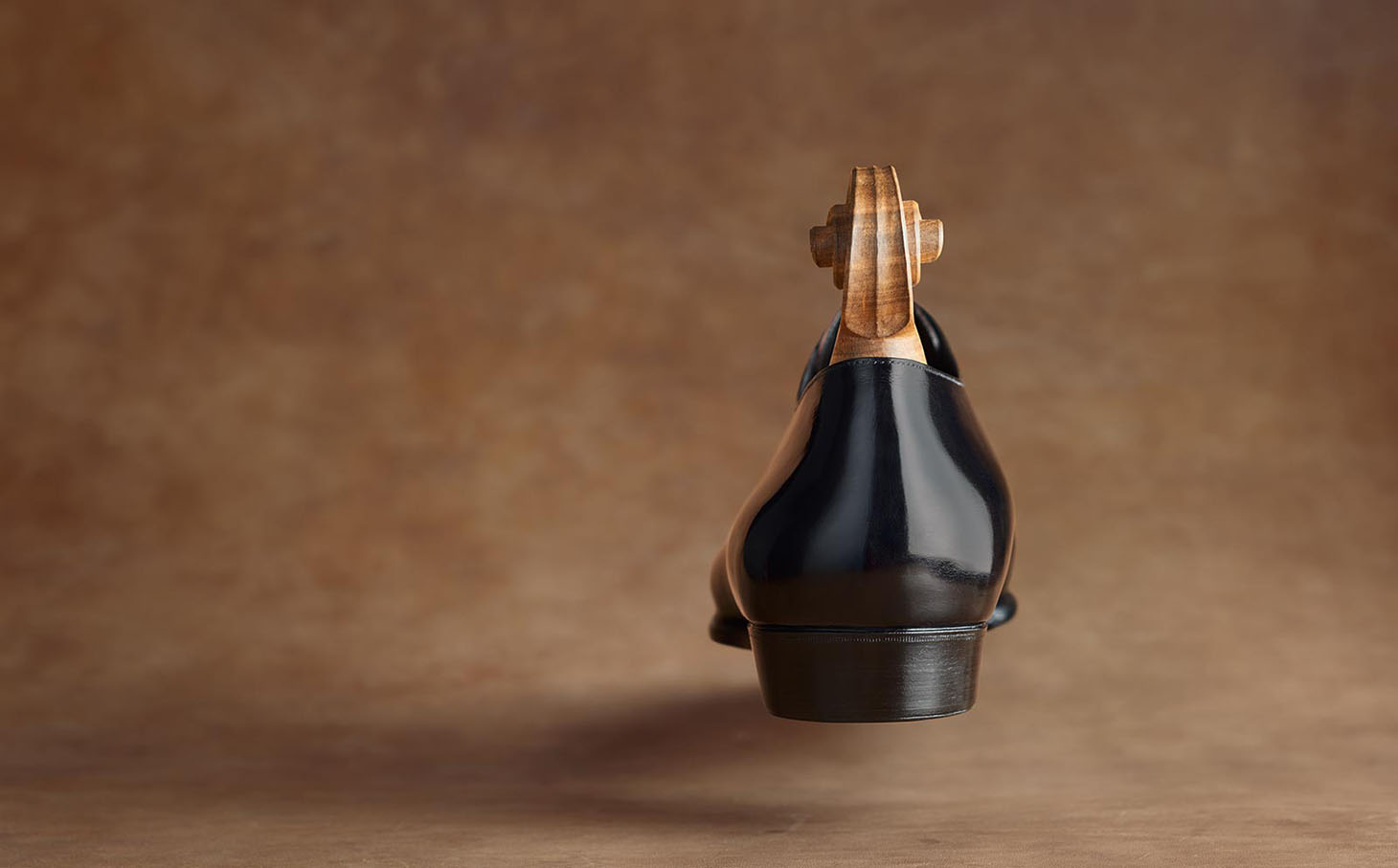
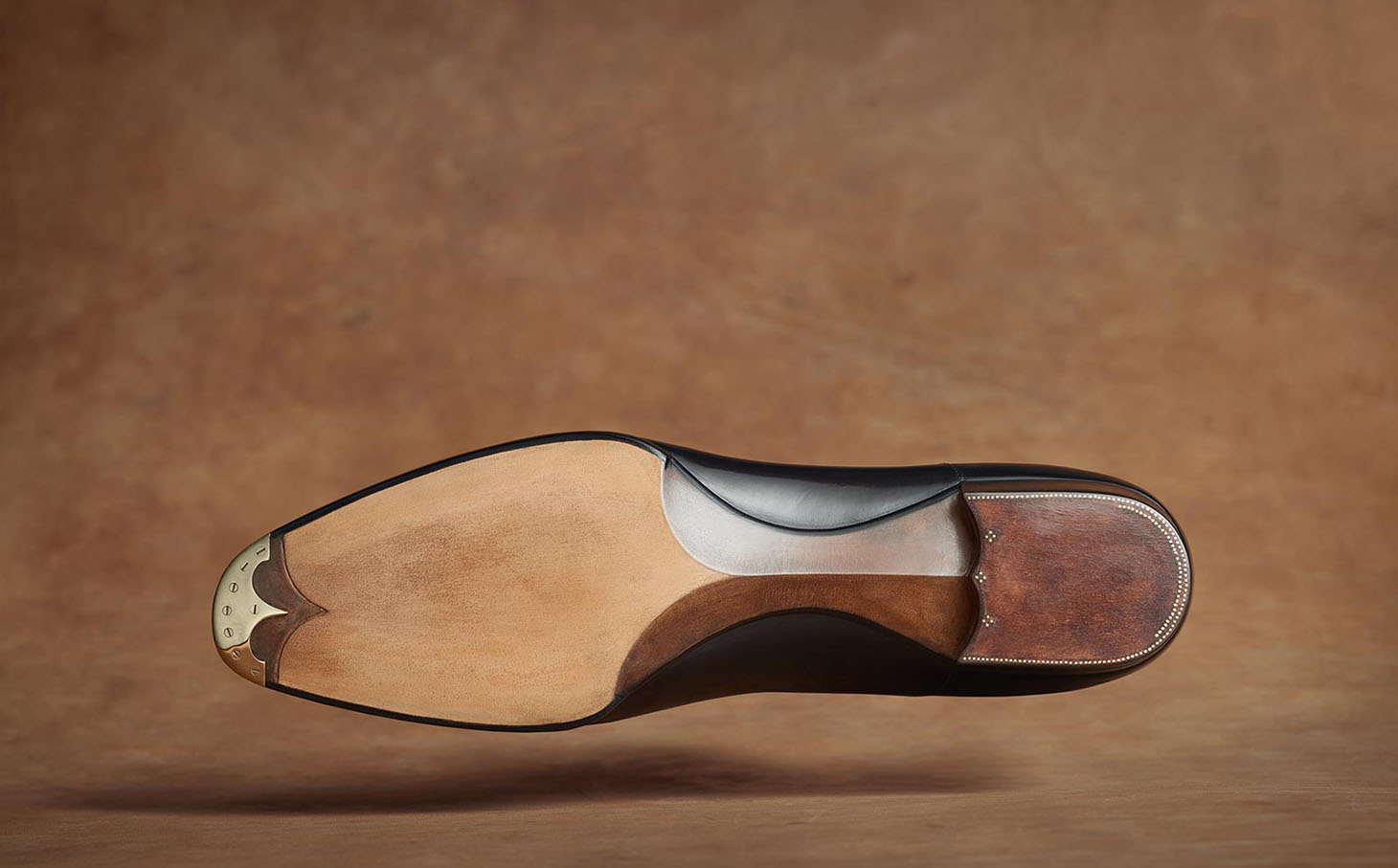
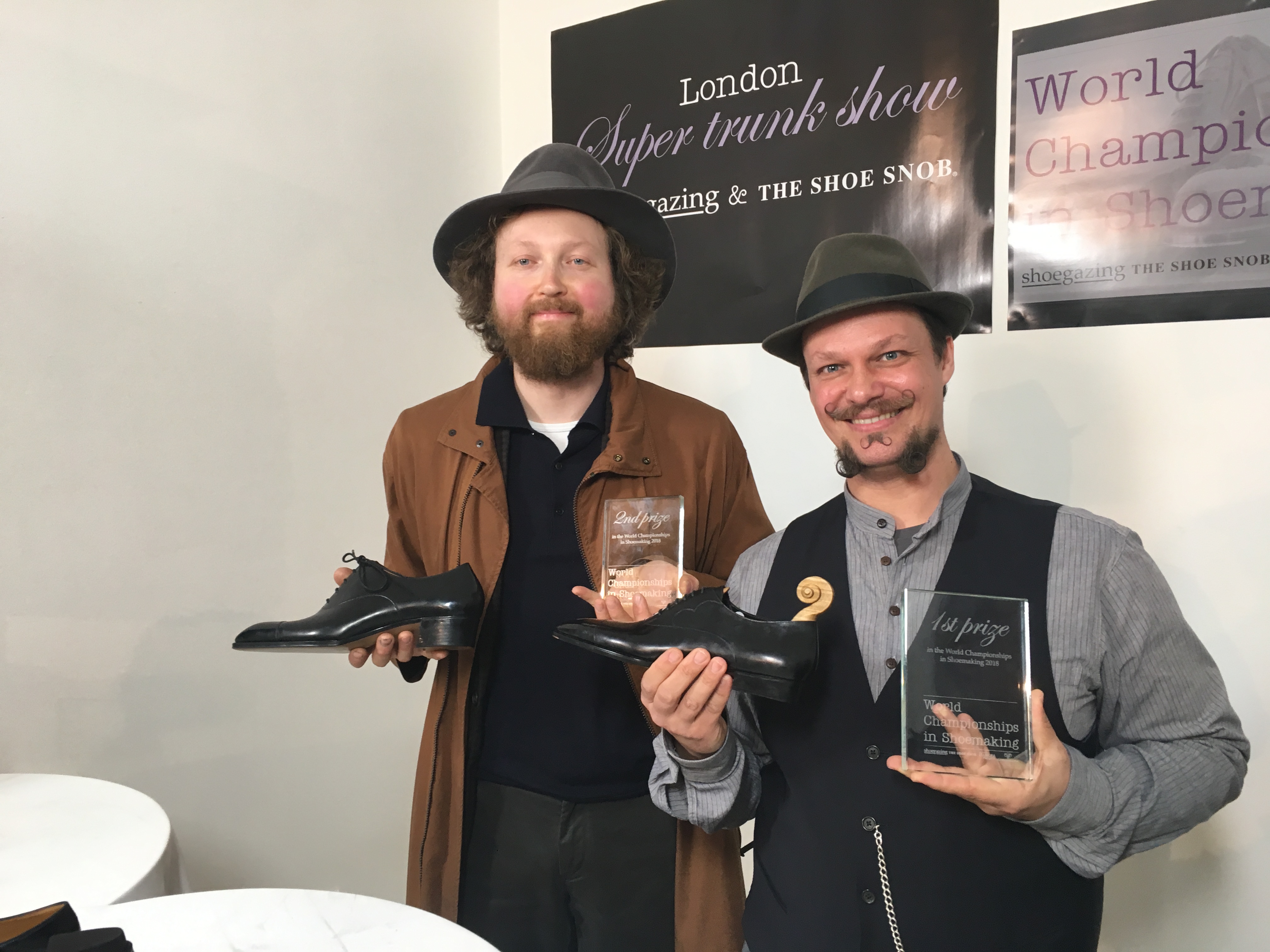


Leave a Reply